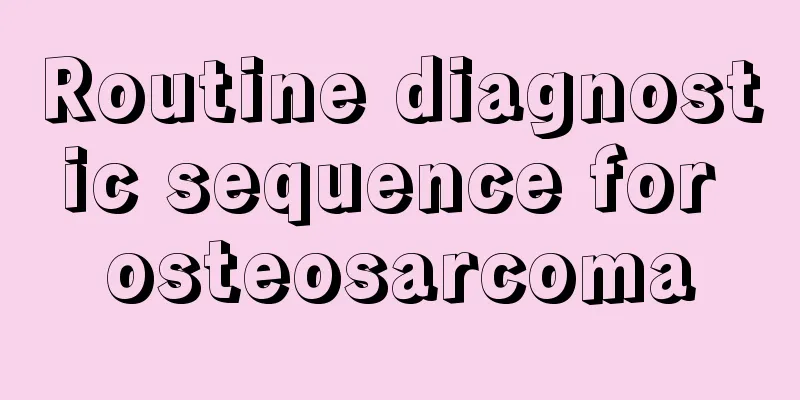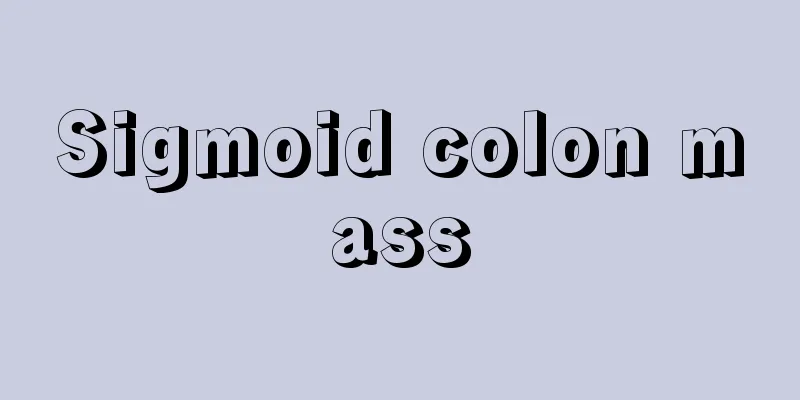Routine diagnostic sequence for osteosarcoma

|
As we all know, early diagnosis is very important for the treatment and prognosis of osteosarcoma. Because the early symptoms of osteosarcoma are not easy to find, a series of examinations are required to confirm the diagnosis. Is there a sequence in the process of examination items? Let's take a detailed look at the routine diagnostic sequence of osteosarcoma. 1. Imaging examination X-ray shows bone hyperplasia, osteolytic destruction, periosteal reaction, obvious new bone hyperplasia under the periosteum, showing the typical Codman triangle (cuff sign) and soft tissue mass. 2. Pathological cytology examination: Incisional biopsy or percutaneous puncture biopsy can further clarify the diagnosis. It is generally divided into fibroblastic type, osteoblastic type, and vascular type. Lung and local X-rays are important steps in diagnosing osteosarcoma and judging the prognosis of sarcoma. The linear signs of osteosarcoma are described from the following aspects: (I) Local soft tissue tumors: If the tumor occurs in the deep layer of the periosteum, or the tumor has broken through from the bone to the surrounding area, irregular patterns can be found in the soft tissue on the X-ray. (II) Periosteal changes: Early periosteal changes are triangular periosteal new bone formation, followed by solar radiation-like periosteal reaction. In the late stage, as the tumor expands to the periphery, the triangular new bone also becomes defective and moves toward the middle of the bone shaft. The solar radiation-like new bone trabeculae, squeezed and destroyed by tumor cells, form a disordered state like fluffy hair. Finally, as the tumor continues to proliferate, the new bone may completely disappear, and the soft tissue may show irregular tumor shadows. (III) Cortical bone changes: When osteosarcoma occurs in the periosteum or cortical bone itself, the earliest and most important change is mild destruction and loosening of the cortical bone on one side. If the tumor is sclerotic osteosarcoma, in addition to bone destruction and loosening, there are also irregular tumor bone hyperplasia shadows. Therefore, in the X-ray, it can be found that the organization is disordered, there is no texture, and the very dense tumor bone shadow overlaps the loose and damaged bone. |
<<: Is pituitary tumor a terminal illness?
>>: What diseases are easily confused with pituitary tumors
Recommend
What are the methods to remove scale from the nozzle
Taking a bath is something we need to do every da...
What are the dangers of having bone cancer
What are the dangers of bone cancer? Bone cancer ...
What are the symptoms of common bile duct obstruction
The human gallbladder is particularly important t...
Reaction after chemotherapy for uterine cancer
In recent years, the number of female patients wh...
How to ripen green mango more effectively
Many people buy mangoes that are actually not rip...
Postoperative care for patients with esophageal cancer
Surgery is the most common treatment for esophage...
How to use bath salts for bathing
Bath salt is a product that is commonly used when...
How to exercise in the early stages of kidney cancer
How to exercise in the early stage of kidney canc...
What is the process of digestion and absorption of lipids?
Lipids include many types, such as oils and lipid...
What are the benefits of Buqi Yishen Pills?
The kidney is the foundation of human constitutio...
Why do my limbs feel sore and weak when I wake up in the morning?
Feeling weak and sore in the limbs when waking up...
Can nasopharyngeal carcinoma be cured in the early stages?
Nasopharyngeal cancer is a regional and familial ...
The benefits of green coconut juice
Coconut is a fruit that is deeply loved by people...
Does the projector hurt your eyes?
Projectors generally do not hurt your eyes. You s...
How should hamartoma be treated better
The incidence of hamartoma is getting higher and ...









